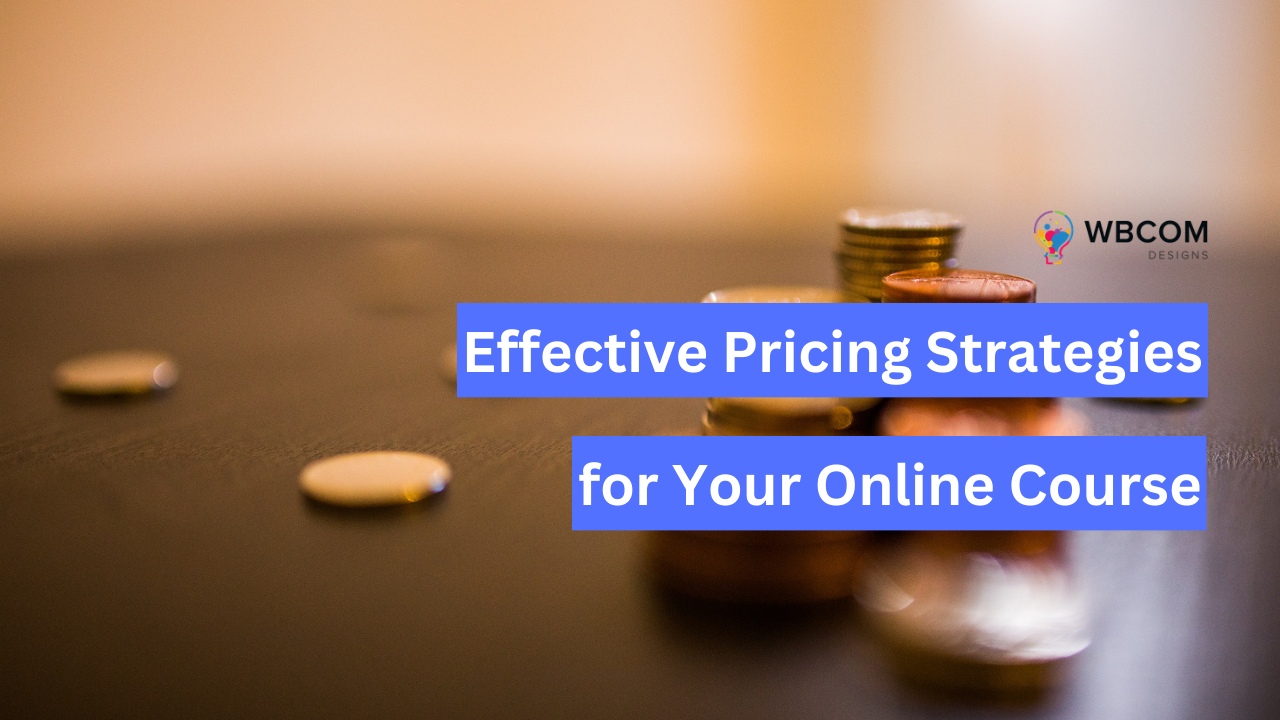Are you looking for effective pricing strategies for your online course? Look no further in this guide; we will summarize all the necessary factors to consider while pricing your online course.
In a world where information is at our fingertips, online courses have become a popular means of acquiring new skills, expanding our knowledge base, and staying relevant in today’s ever-changing job market. However, with countless online courses available, how do you make your online course stand out and attract students? The answer lies in effective pricing strategies.
Pricing is not just slapping a number on your course and hoping for the best. It requires careful consideration and analysis to ensure that you provide value to your students while making a profit.
In this blog post, we will explore the most effective pricing strategies for your online course, including how to price for different courses, how to use discounts and promotions, and how to create a pricing model that works for you and your students. Whether you are a seasoned online course creator or just starting, this post will provide valuable insights that will help you maximize your course’s potential and achieve your desired results.

Table of Contents
ToggleWhat are the factors to consider when pricing your online course?
Here are some factors you need to consider before pricing your online course:
- Cost of production: The production price includes all the expenses associated with creating your online course, such as content creation, video production, website hosting, and software tools. You need to factor in these costs when determining your course price to ensure that you make a profit.
- Target audience: Your target audience plays a crucial role in determining the price of your online course. If your target audience comprises high-income earners, you may be able to charge a higher fee. On the other hand, if your target audience comprises students or individuals with limited income, you may need to price your course more affordably.
- Competitor analysis: Conducting a competitor analysis can help determine how your course compares to others in your industry. This will help you identify your course’s unique value and how you can price it competitively.
- Value proposition: Your value proposition sets your course apart from others. It is the unique benefit that students will receive from taking your course. When pricing your course, you need to consider the value proposition and ensure that it justifies the price you’re asking for.
- Market demand: The demand for your course in the market will also affect the price you can charge. If your course is in high demand, you may be able to charge a higher price. Conversely, if the demand is low, you may need to price your course more affordably to attract students.
By considering these factors and finding the right balance between your costs, value proposition, and target audience, you can set a profitable and attractive price for potential students.
What are some common pricing strategies for online courses?
Here are some common but effective pricing strategies for online courses:
- Flat fee: This is a fixed price for your course, regardless of how many students enroll. It is a simple pricing strategy that works well for courses with a single level of content.
- Tiered pricing: With this strategy, you offer different pricing tiers for varying access levels to your course. For example, you may have a basic level that includes the core content and a higher tier with additional resources, personalized coaching, or live Q&A sessions.
- Subscription model: This pricing strategy involves charging students a recurring fee to access your course content. This can be a good option for courses constantly updated with new material or courses that provide ongoing support or access to a community of learners.
- Freemium model: With this pricing strategy, you offer a free basic version of your course and charge for additional features or advanced content. This can be an excellent way to attract students who may be hesitant to invest in your course upfront and allow them to experience the value before deciding to pay for additional features.
- Bundling: This pricing strategy involves combining multiple courses or resources into a single package and offering them at a discounted rate. This can be a good option if you have a suite of courses that are related or provide complementary skills.
- Dynamic pricing: This pricing strategy adjusts the price of your course based on various factors such as the number of students enrolled, time of year, or market demand. This can help you optimize your revenue and ensure you’re pricing your course competitively.
When choosing effective pricing strategies for your online course, it’s essential to consider your course content, target audience, and desired outcomes. By selecting the right pricing strategy, you can maximize your revenue and attract the right students to your course.
What are the techniques to optimize your pricing strategy?
Here are some techniques to optimize your pricing strategy:
- Price anchoring: This technique involves setting a high price point for your course and then offering a lower-priced option as a comparison. The high price anchor makes the lower price seem more reasonable in the customer’s mind.
- Price skimming: This technique involves setting a high price for your course at launch and gradually lowering the price over time. This can be effective if your course is highly anticipated and has a solid early demand.
- Price bundling: Bundling is the practice of packaging two or more courses and offering them at a discounted price. This can be an excellent way to increase your courses’ perceived value and attract customers interested in multiple courses.
- Value-based pricing: This technique involves setting prices based on the perceived value of your course to the customer. This requires understanding your target audience and their willingness to pay for your course.
- A/B testing: A/B testing involves testing different pricing strategies on small groups of customers to see which approach is most effective. This can help you optimize your pricing strategy and increase your revenue over time.
Using these pricing techniques can optimize your pricing strategy and increase your revenue. It’s essential to experiment with different pricing strategies and always keep your target audience in mind. By finding the right balance between price and value, you can maximize the success of your online course.
Additional tips for effective pricing of your online course
Here are some other tips for effective pricing of your online course:
- Consider the perceived value of your course: The perceived value of your course can play a significant role in how much customers are willing to pay. Ensure you’re communicating the benefits of your course and how it can help customers achieve their goals.
- Offer discounts or promotions strategically: Discounts and promotions can effectively generate interest in your course, but it’s essential to use them strategically. For example, offering a limited-time discount can create a sense of urgency and encourage customers to enroll.
- Use scarcity tactics: Scarcity tactics involve creating a sense of urgency by highlighting limited availability or limited-time offers. This can encourage customers to act quickly and enroll in your course.
- Leverage social proof: Social proof involves using testimonials, reviews, and endorsements to demonstrate the value of your course to potential customers. This can help build trust and increase the perceived value of your course.
- Monitor and adjust your prices regularly: It’s essential to monitor the performance of your course and adjust your prices as needed. If you’re not getting enough enrollments, you may need to change your pricing strategy to align better with your target audience’s willingness to pay.
By following these additional tips, you can create effective pricing strategies for your online course and maximize your revenue. It’s important to keep experimenting and refining your strategy over time to ensure the success of your course.

Wrapping Up Words
In conclusion, pricing your online course can be daunting, but it doesn’t have to be. Considering the abovementioned factors, you can develop a pricing strategy that works for you and your students. Remember to be flexible and willing to adjust your prices as needed, and always keep your students’ needs in mind. With the right pricing strategy, you can create a successful online course that benefits your students and brings you a steady stream of income.






